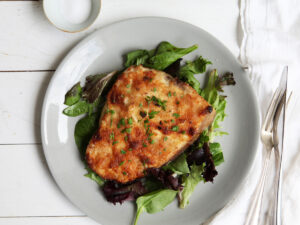Homemade playdough is a timeless favorite among parents, teachers, and kids alike. Originating as a simple modeling compound used for educational play, it has gained popularity for being safe, customizable, and inexpensive compared to store-bought versions.
Its soft, pliable texture and potential for vibrant colors make it perfect for sensory play and creativity. Plus, making it at home turns into a fun DIY activity that doubles as a bonding experience with kids.
Ingredients
Here’s what you’ll need to make a basic batch:
-
2 cups all-purpose flour
-
1 cup salt
-
2 tablespoons cream of tartar
-
2 tablespoons vegetable oil
-
1.5 cups water
-
Food coloring (optional, as needed)
Possible Substitutions:



-
Gluten-Free: Use gluten-free all-purpose flour.
-
No Cream of Tartar: Substitute with 1 tablespoon of lemon juice or white vinegar.
-
Natural Colors: Use beet juice, turmeric, or spinach water for coloring.
Step-by-Step Cooking Instructions
-
Mix Dry Ingredients:
In a large saucepan, combine flour, salt, and cream of tartar. -
Add Wet Ingredients:
Stir in water and vegetable oil. Add food coloring now if you’re using a single color for the whole batch. -
Cook the Mixture:
Place the saucepan on medium heat. Stir constantly. After a few minutes, the mixture will begin to clump and form a dough. -
Knead Until Smooth:
Once the dough pulls away from the sides and is no longer sticky, remove it from the pan. Let it cool for a few minutes, then knead until smooth and consistent in texture. -
Divide and Color (Optional):
If you want multiple colors, divide the dough into portions and knead different food coloring into each.
Estimated Cooking Time:
10–12 minutes total
Common Mistakes to Avoid:
-
Overcooking the dough can dry it out.
-
Not stirring enough may lead to clumps or uneven consistency.
-
Adding too much coloring at once can stain hands or surfaces—start small.
Pro Tips and Cooking Techniques
-
Texture Tip: For a softer texture, add an extra tablespoon of oil during cooking.
-
Storage Hack: Keep playdough in an airtight container or ziplock bag to retain moisture for weeks.
-
Microwave Option: Combine ingredients in a bowl and microwave in 30-second intervals, stirring in between, until dough forms.
Variations and Customizations
-
Scented Playdough: Add a drop or two of essential oils like lavender or peppermint.
-
Edible Version: Use baby rice cereal or powdered sugar for taste-safe recipes.
-
Eco-Friendly: Use natural food dyes from vegetables and fruits.
-
Sparkle & Fun: Mix in glitter, beads, or small toys for a textured play experience (ensure age-appropriate).
Serving Suggestions
While not a food dish, presenting playdough matters for fun!
-
Use cookie cutters, rolling pins, and molds to shape.
-
Provide a themed play mat or tray to keep things tidy.
-
Include a “toolbox” with plastic utensils and toys for added creativity.
Nutritional Information
While not meant for eating, here’s a general breakdown per tablespoon-sized piece (for safety context):
-
Calories: 15
-
Carbohydrates: 3g
-
Fat: 0.2g
-
Protein: 0.3g
-
Sodium: 120mg
Frequently Asked Questions (FAQs)
Q: How long does homemade playdough last?
A: Stored properly, it can last up to 2 months.
Q: Can I refrigerate it?
A: Yes, but it’s not necessary. Keep in a cool, dry place.
Q: It got too sticky. What should I do?
A: Knead in a little extra flour until desired consistency is reached.
Q: Can it go moldy?
A: Yes, if exposed to moisture and not stored well. Add a bit of lemon juice as a natural preservative.
Q: How do I clean it off carpets or clothes?
A: Let it dry, then scrape off gently. Wash with warm soapy water.
Closing Thoughts
Homemade playdough is more than just a craft—it’s a tool for creativity, learning, and sensory exploration. It’s easy to make, budget-friendly, and a fantastic hands-on project for all ages.
Try it out with your kids or students, and feel free to experiment with colors, scents, and textures. Share your creations or ask questions—we’d love to see what you make!



